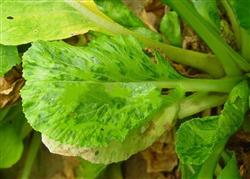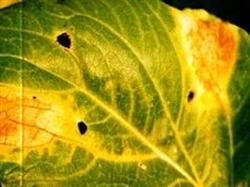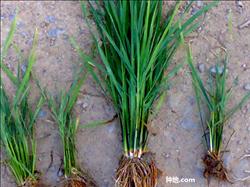How to prevent and cure rape virus disease?

How to prevent and cure rape virus disease? Please guide the occurrence of rape virus disease symptoms in all rape producing areas throughout the country, especially in winter rape areas in North, Southwest and Central China. The symptoms of the disease were slightly different due to different types of rape. Brassica campestris and Brassica juncea mainly produce chlorosis along both sides of leaf veins, leaves are yellow-green flowers and leaves, bright veins or leaf veins are translucent, when the leaves are serious, the leaves are wrinkled, curled or deformed, the diseased plants are obviously dwarfed, and most of them die before or during bolting. Those with mild disease and late onset can bolting, but the flowers are bent or dwarfed, the flowers and pods are dense, the pods are thin and shrunken, and the maturity is early. On the other hand, systematic withered spots appeared in Brassica napus, and the symptoms of the old leaves were obvious in the early stage, and then spread to the new leaves. At the beginning of the disease, there were needle-sized transparent spots, and then expanded into a near-round surface 2-4mm macula, with dark brown necrotic spots in the center and oil stains around the necrotic spots. Purple-black fusiform to long strip disease spot appeared on the stem, and spread from the middle and lower part to the branches and fruit pedicels. In the later stage, the disease spot on the stem was mostly longitudinally or horizontally cracked, and the flowers and pods were easy to wilt or die. Pods produce black dead spots and are deformed. The virus disease of cruciferous vegetables such as rapeseed is caused by Turnip mosaic virus for short TuMV, turnip mosaic virus and Cucumber mosaic virus for short CMV, cucumber mosaic virus and Tobacco mosaic virus for short TMV, and tobacco mosaic virus for short, mainly turnip mosaic virus, which often reduces rape yield by 52% and 63%. According to a survey conducted by Li Lili and others in 12 counties and cities in Hubei, Hunan, Sichuan, Guizhou, Guangxi, Anhui and Jiangsu provinces, turnip mosaic virus accounted for 83.1%, cucumber mosaic virus accounted for 19.39%, tobacco mosaic virus accounted for 8.62%, and other viruses accounted for 0.31%. In general, the single infection rate of turnip mosaic virus is 50% Mui 76%, while that in Guangxi is 24.32%. In production, the combined infection of TuMV and CMV is more, accounting for 70.27%. The single infection rate of CMV is only 5.4%. Turnip mosaic virus plasmid linear, size 700-800 × 12-18 (nm), detoxification temperature 55-60 ℃ after 10 minutes, dilution limit 1000 times, in vitro preservation period of 48-72 hours, through aphids or juice contact transmission, in the field natural conditions mainly rely on aphids. In addition to Cruciferae, it can also infect spinach, chrysanthemum, mustard and so on. At present, it is known that there are several strains in its differentiation. In addition, Youcai mosaicvirus, abbreviated as YMV, was found in Shanghai, Zhejiang, Sichuan, Jiangsu and Guangdong, which is called rape mosaic virus, which may be a member of tobacco mosaic virus group. It caused the wrinkling deformity of rape mosaic and newborn leaves, the plants were short, and most of the seriously diseased plants died before bolting. YMV virus spheroid, diameter 38nm. The transmission route and disease condition of winter rape virus overwintered in the host in China, and was transmitted by peach aphid, cabbage aphid, cotton aphid, cabbage aphid and other aphids in the following spring, in which peach aphid and cabbage aphid were very common in rape field. winter rape area has become an important source of cruciferous vegetables and weeds such as rape, spring cabbage, shepherd's purse, vegetable and so on. In addition, weeds such as plantain and horseradish, as well as Solanaceae and legumes are also the oversummer hosts of the virus. The virus in spring rape area can also survive the winter on cruciferous vegetables such as greenhouse, plastic shed and rape cultivated in sunny border. The winged aphid migrated to the rape field after taking drugs on the over-summer host, causing the first infection. After the disease occurred in the rape field, the aphids migrated and spread, resulting in the re-infection of the disease. In the area where cruciferous vegetables were not planted in winter, the virus overwintered on hoard cabbage, cabbage and radish. After the disease occurred in the next spring, the virus was transmitted to rape by the above-mentioned aphids, and the source of the virus was transmitted to autumn vegetables in autumn, so the cycle began again and again. In addition, contact with viral juice can also spread the virus. Recent studies have pointed out that TuMV and CMV not only transmit virus by aphids, but also find that there are natural non-aphid-transmitted lines, which brings difficulties to control. But it has opened up a new field for the study of plant viruses. The rape cultivation area is dry in autumn and spring with little rain and high temperature, which is beneficial to the occurrence of aphids and the migration of winged aphids, and the disease is easy to occur and epidemic. Early sowing or transplanting rape in autumn and late sowing in spring are prone to disease. The disease of Brassica napus and Brassica napus was more serious than that of Brassica napus. Control methods (1) according to local conditions, rape varieties resistant to virus disease, such as turnip mosaic virus, are: Ningyou 7 Dacang 8001, 8007, 81-23, Dangyou 3, Glycerol 5, 71-8, 730, Southwest 302, Chongyou 202, Chuanyou Huaye, Xindu 4, Guoqing 25, Hongyou 1, Wanyou 12, 13, Heza 2, Xiangzayou 1, Qianyou Shuanglow 2, Liangyou 586 Rongyou 3, Ganbai rape, Jiangyan 1, Chuyou 4, Yuyou 2, Zhongshuang 4 and other virus resistant varieties. (2) adjust the sowing date according to the 9-10 rainfall forecast of the current year, the sowing time should be properly late in rainy days and drought, and early in rainy years. (3) the rape field is as far away from the cruciferous field as possible. (4) when rapeseed was mixed with 25 kinds of coating agents at 1:50 or Weifu 1Ru 100 times, the damage of aphids and underground pests could be controlled within 30 days, and it was effective to control virus diseases. (5) controlling aphids in the field. It is recommended to plant tall crops around the seedbed to prevent aphids from migrating and spreading virus; apply silver gray paint on silver gray plastic film or ordinary agricultural film and window screen to avoid aphids; use yellow plates to trap aphids with 6-8 pieces per 667m2, using aphids to trap them. Emphasis should be placed on summer weeds and early-sowing cruciferous vegetables to prevent them from spreading the virus to rape. It is very important to control aphids at the 3-6 leaf stage of rape. 1000-1500 times of 40% dimethoate EC or 1000-1500 times of 50% malathion EC, 4000 times of 50% mijing and 6000 times of 20% cyanide horse EC should be sprayed in time. (6) at the initial stage of the disease, 0.5% anti-virus abundant mushroom proteoglycan water agent 300x liquid or 10% virus king wettable powder 500x liquid, 1.5% Zhishiling emulsion 1000 times liquid, 83 resistance enhancer 100x solution, once every 10 days, continuous prevention and treatment for 2-3 times. Click to get more rape planting techniques click to get more food crop planting techniques
- Prev

What should rape management pay attention to?
How to control black rot of rapeseed? Please tell me that the symptoms of black rot in rape are mainly harmful to leaves, stems and pods. The disease can occur in both seedlings and adult plants. Leaves infected with yellow "V"-shaped spots, leaf veins dark brown, petiole dark green water stains, sometimes overflowing with yellow bacterial pus, disease spots spread to dry leaves. The main shaft after bolting.
- Next

How to manage the planting of rape?
How to prevent and cure rice litter disease? Please help rice sitting, that is, rice red blight, which is a common physiological disease in rice production. The disease usually begins about 15 days after planting seedlings. Such as cold wave after planting seedlings, cold soaked field, rotten mud field, deep paddy field, application of unmature organic fertilizer, partial application of elemental chemical fertilizer, lack of potassium.
Related
- The first cup of black tea in spring, the flavor and history of tea gardens in Kenya, Africa
- The computer can not only choose potatoes, but also grow tea rice. AI will grow winter oolong tea champion.
- It is not only the inflated tea bitten by insects, but also engraved with the four seasons tea in Beipu.
- The Oriental Beauty Tea Festival in Zhuxian County takes the stage at the weekend to experience the plus-size feast of oil tea.
- & quot; Oriental Beauty Tea & Exploration of Emei in Hsinchu, the hometown of quot;
- The new variety of strawberry "Tainong 1" dessert is the first choice with mellow aroma. Crimson gorgeous
- History of Tea in Taiwan: from Wild Inner Mountain to Export Tea Garden
- Two types of Taiwan Oriental Beauty Black Tea won the British three-Star Award for Childhood Tea Xiang Zhang Jiaqi changed from pilot to champion tea maker.
- Banana species and varieties: the planting history of Taiwan Xianren banana and dwarf banana is long, is banana disease resistant?
- Coffee planting Technology: Qianjie Coffee from Seedling to harvesting

